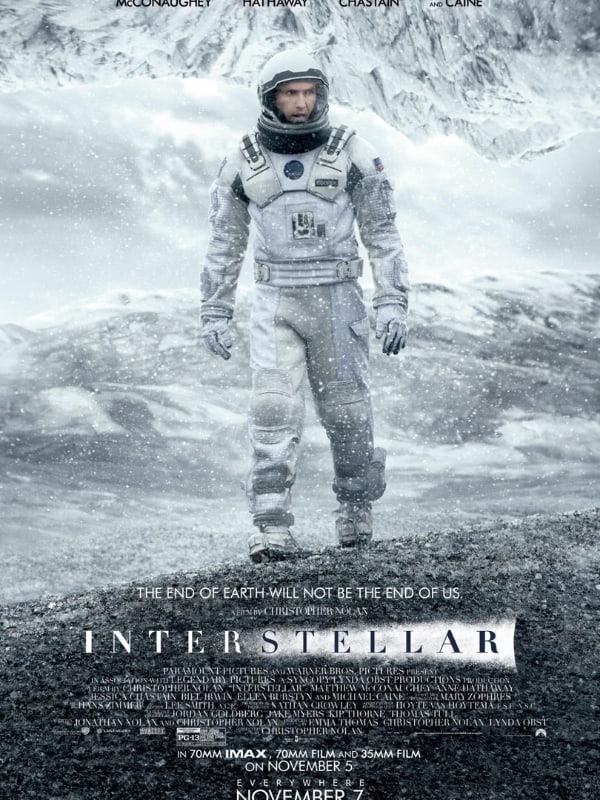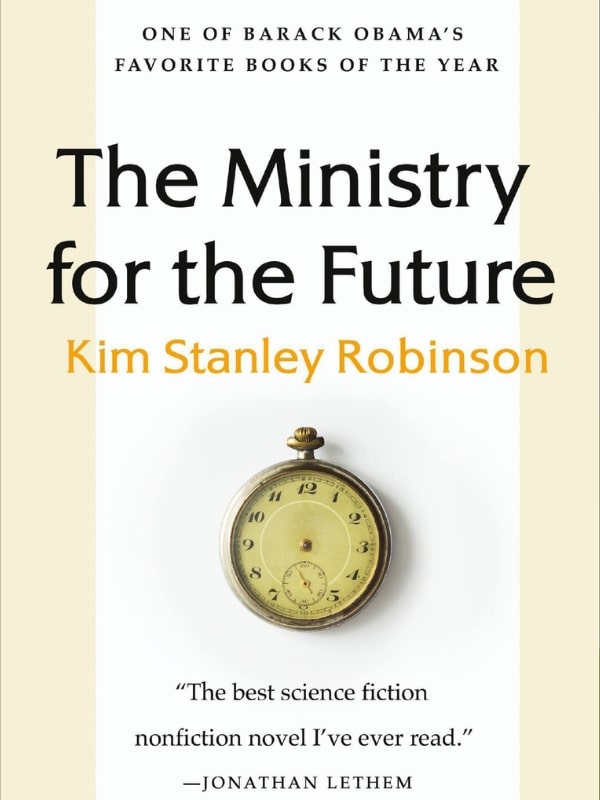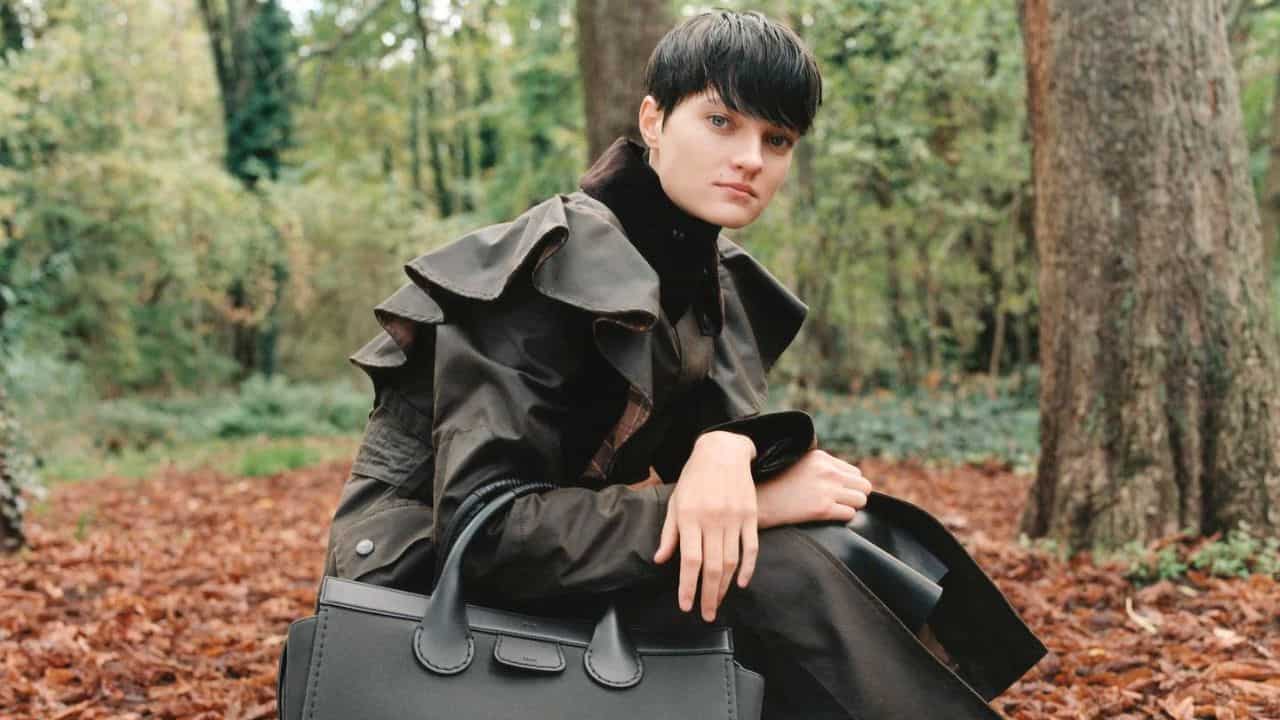A new literary genre has taken the world by storm in the face of the climate emergency.
Climate fiction, or cli-fi, explores speculative futures caused by human-made climate change.
Climate fiction books, short stories, and movies are a pop culture phenomenon evoking the power of storytelling to immerse their audience in a future that may become a reality without urgent action—and are thus designed to inspire action and even hope.
Still wondering, “What is cli-fi?”
Read on to find out how climate fiction can help us imagine a more sustainable future, as well as our top recommended movies and books about climate change.
Exploring Climate Change Fiction & What To Read Or Watch First
The Best Climate Fiction Short Stories & Books
- The Ministry of the Future by Kim Stanley Robinson
- The Drowned World by J.G. Ballard
- American War by Omar El Akkad
- The Overstory, by Richard Powers
- Parable of the Sower by Octavia E. Butler
- The Swan Book by Alexis Wright
- Tentacle by Rita Indiana
- Blackfish City by Sam J. Miller
- Trail of Lightning by Rebecca Roanhorse
The Best Climate Fiction Movies
What Does Climate Fiction or ‘Cli-fi’ Mean?

So, what is climate fiction?
No, it doesn’t refer to the wrong side of the “climate change: fact or fiction” debate (because we ALL know the answer to that).
Simply put, climate fiction (cli-fi) is a fiction genre that utilizes elements of speculative fiction to tell stories of a world impacted by climate change.
Sophia Cheng, Founder of With Many Roots, a climate change education consultancy, explains:
“Creating narratives around complexity is what makes cli-fi so appealing. […] Just like historical fiction can help us understand the past, cli-fi can help us navigate the myriad of interconnected issues we must solve in the face of climate change.”
While it’s important to keep climate change facts vs fiction in mind (there are going to be certain embellishments and dramatization in any fictional story, of course), these sometimes outlandish stories can invoke images of a future reality that’s all-too-possible.
Whether it’s through the medium of books, movies, TV shows, or podcasts, each story embedded in climate fiction helps the audience connect to the climate crisis on an emotional level.
What Is The Difference Between Science Fiction And Climate Fiction?
Science fiction (sci-fi) is a genre of speculative fiction that imagines alternative ways of life through technological changes or advancements.
It’s typically futuristic and explores concepts like space exploration, extraterrestrial life, and time travel.
Cimate fiction (cli-fi), a spinoff of the genre, adopts many of the same traits as science fiction, but the key difference is that it shows a stark warning of what could happen as our climate changes.
It draws on both realism and the supernatural to speculate a new reality for our world.
What Is The History Of Cli-fi?
Climate fiction as a literary phenomenon is still relatively new. From journalist and literary theorist Dan Bloom, ‘cli-fi’ was coined in 2007-2008.
However, the concept of a world ripped asunder by environmental catastrophes has been around for a while.
Pioneering 20th-century authors, including Margaret Atwood, Octavia E. Butler, and J.G. Ballard, have since had their works retroactively applied to this genre.
It wasn’t until the 1960s and 1970s that fiction as a result of the scientific awareness of human-made, carbon-induced climate change emerged.
‘Human-made’ is key here.
Climate fiction is about climate disasters caused by human actions rather than a biblical apocalyptic event sent as punishment by a vengeful God or other outside forces.
With climate change becoming a real threat to our world and way of life, modern cli-fi books and movies have grown in popularity.
In fact, the independent media organization dedicated to climate justice, Grist, suggests “any stories that don’t consider the fate of the climate will soon start to look pretty otherworldly”.
Does Climate Fiction Make A Difference?

For climate researcher Bill McGuire, storytelling helped communicate his warnings far more effectively than any graph or data could.
Writing for the New Scientist, he says, “It wasn’t until I published my first novel, Skyseed, in 2020 that I realized the power of storytelling to get across the urgency of the situation.”
Cli-fi explores the impact of climate change through the imagination. While the future is uncertain, it divulges alternative outcomes based on human (in)action.
Storytelling has always been a powerful tool to help us learn, connect with each other, and tap into our emotions. In other words, it makes us feel and empathize.
By connecting with characters experiencing the effects of climate change, we can imagine future generations and even ourselves in similar circumstances.
On that basis, climate change fiction is, as McGuire explains, “a call to arms”.
How Can Imagination Help Us Fight The Climate Crisis?
“It was exploring imagination that drew me to this topic,” says Cheng.
“Psychological research has shown that stress inhibits our ability to imagine. […] In our brains, high levels of cortisol and particularly trauma affect and can damage the hippocampus, where our memories and ability to construct possible futures are stored.”
And that stress has never been more pervasive (rightfully so!).
Six out of ten young people are “very worried” about climate change and four in ten are hesitant to have children because of it.
Rob Hopkins, author of ‘From What Is to What If’ says this is creating the “perfect storm”:
“As we face vast crises that demand imaginative and urgent responses and a reimagining of everything, we are simply not up to it. […]
“While many of the technologies, economic models, and know-how for creating a future in which we can all thrive already exist, what is missing is the longing. Imagination is so important because it helps us create longing, and if we can get that right, other things then follow.”
Climate Fiction Books & Movies That Inspire Change
So what is climate fiction in literature and film?
These popular climate fiction movies and books are the perfect place to start exploring the fascinating genre of cli-fi.
The Best Cli-Fi Short Stories & Books
1. The Ministry for the Future by Kim Stanley Robinson
One of the best fiction books about climate change, The Ministry for the Future by science-fiction writer Kim Stanley Robinson takes a look at the realities of global warming over the coming decades.
Using fictional eyewitness accounts, she explores how it will ultimately affect us all.
Key characters in the plot include Mary Murphy, the head of an organization called Ministry for the Future, and Frank May, an American aid worker who is traumatized after experiencing a deadly heatwave in India.
The novel isn’t a gloomy post-apocalyptic story, but rather a narrative about the resilience of humankind and our ability to overcome the desperate challenges we face. There are elements of utopian fiction as Robinson portrays a society that’s actively fixing the mistakes of the past.
2. The Drowned World by J.G. Ballard
The Drowned World is considered to be one of the founding climate change fiction stories.
Set in 2045, it imagines what would happen when temperatures rise to uninhabitable levels and the ice caps melt.
Fluctuations in the sun’s radiation cause temperatures to rise, and most of the Earth is largely uninhabitable for human life. The survivors migrate to the newly hospitable Poles.
What’s left of the UK has a tropical climate, and London is a swamp submerged by water and jungle vegetation.
While most people flee the capital, some remain, including the scientist Dr. Robert Kerans, who becomes strangely attached to the newly formed lagoons of London.
3. American War by Omar El Akkad
American War is the first novel by Canadian-Egyptian journalist Omar El Akkad.
The Second American Civil War breaks out in 2074 when the northern states ban the use of fossil fuels. The story is told by a future historian, Benjamin Chestnut, about his aunt, Sarat Chestnut, documenting her life as a young girl born in Louisiana, which is halfway underwater.
After her father is killed, she’s forced to become a climate refugee and live in a camp for displaced persons until she becomes a deadly instrument of war.
The story draws on Omar’s experience as a war correspondent to explore a harrowing future that has uncanny parallels with today.
4. The Overstory by Richard Powers
Winner of the Pulitzer Prize for Fiction in 2019, Richard Powers’ The Overstory is a moving novel about the dangers of deforestation.
The book is divided into four sections called ‘roots,’ ‘trunk,’ ‘crown,’ and ‘seeds’ to mimic the lifecycle of a tree.
It follows the lives of five trees and nine people across generations brought together to save the natural world from catastrophe. The trees portrayed are both bystanders and instigators in these nine characters’ lives, deaths, and actions.
One of the best books on climate change from a forest-focused perspective, it shows how interconnected we are to nature and to ignore this relationship would be at our peril.
5. Parable of the Sower by Octavia E. Butler
Climate change, corporate greed, and social inequality are all addressed in this dystopian novel by Octavia E. Butler—AKA one of the most important voices in science fiction, period.
Divulging unnerving similarities with the present day, America is in chaos, and only the rich and powerful have the means to be saved.
Parable of the Sower is told from the perspective of Lauren Olamina, a young woman with the ability to feel the pain of others as if it were her own.
All is not lost; her vision of a better world becomes a reality through empathy, hope, and collaboration.
Lauren becomes displaced from her home and journeys north, joined by several different characters from different walks of life.
She learns of a religion called ‘Earthseed,’ which encourages believers to influence change around them through conscious effort. The religion also prophesizes that it is human destiny to inhabit other planets.
Since publication in 1993, Parable of the Sower has been adapted into an opera and cli-fi comic, and has influenced numerous academic essays on climate and social justice.
It’s also been hailed as one of the founding novels of climate change literature.
6. The Swan Book by Alexis Wright
The third book by author Alexis Wight, The Swan Book, is set in the future in an Australia altered by climate change. Aboriginals are still living under the Intervention in the northern territories.
Mute teenager Oblivia goes from a displaced community living in a swamp to the wife of Warren Finch, the first Aboriginal President of Australia. As First Lady, she’s confined to a tower in a lawless and flooded southern city.
Combining myths and legends with hopeful storytelling in the bleakest of realities, The Swan Book puts Aboriginal perspectives front and center in the climate crisis.
7. Tentacle by Rita Indiana
Tentacle is a cli-fi novel set in post-apocalyptic Santo Domingo, the capital of the Dominican Republic in the Caribbean.
The world suffers an environmental collapse following three ecological disasters.
Young maid Acilde Figueroa is at the heart of a voodoo prophecy that foretells that she’s the only one who can go back in time and save the oceans (and humanity) from catastrophe.
But first, she must become a man.
Spanning three timeframes, the story takes a magnifying glass to the region’s colonial history alongside capitalism, climate change, poverty, gender norms, queer politics, and technology.
8. Blackfish City by Sam J. Miller
A floating city in the Arctic Circle is constructed in a world ravaged by war and climate change.
Called Blackfish City, the incredible feat of engineering becomes submerged in a civilization rife with corruption, disease, and unrest.
One day, a mysterious warrior appears, accompanied by her orca and chained polar bear. Searching for someone she lost thirty years ago, her arrival brings together four people and changes the future of the city forever.
The dystopian fiction explores the power of human connection in the face of adversity and brings hope to a bleak and unforgiving world.
9. Trail of Lightning by Rebecca Roanhorse
An environmental disaster strikes, and most of the world is drowned by rising sea levels. Out of it, Dinétah, formerly Navajo Reservation, becomes an independent state.
Indigenous gods and legends walk the Earth—but so do monsters.
A medicine man and a supernaturally gifted monster hunter are enlisted to solve the mystery of a missing girl, but what they uncover threatens the future of their world.
A kick-ass, supernatural yarn set in a climate post-apocalypse gives center stage to Indigenous communities that are often overlooked in climate discussions, especially in western civilization.
In fact, it’s one of the best books about the environment from a freshly unique perspective of marginalized voices who have so many valuable things to say about it.
Trail of Lightning is the first of the Sixth World Series.
The Best Cli-Fi Films
10. Don’t Look Up (2021)

The Netflix hit Don’t Look Up is a parable about global warming disguised as a disaster movie about an asteroid destroying Earth.
Graduate Student Kate Dibiasky discovers a new asteroid, but together with her Ph.D. advisor, Dr. Randall Mindy, they find out an environmental catastrophe is imminent, as it’s on track to hit Earth.
They try to alert the public and apathetic world leaders by appearing on talk shows and meeting with the President of the United States.
After a tech billionaire discovers it’s made from a valuable mineral, the attempt to prevent the collision without destroying the asteroid fails.
Don’t Look Up is a satirical film with gloomy undertones about the dangers of being apathetic in the face of climate change.
11. WALL-E (2008)

What is an example of a cli-fi almost everyone knows?
That would be the beloved Pixar animated movie WALL-E.
A tale about the impact of overconsumption, WALL-E is set in a future where Earth has become a literal landfill. It’s uninhabitable and beset by violent storms.
Robots like the film’s lovable protagonist have been tasked with clearing the trash while humans are sent off in spaceships searching for a second habitable planet.
Very much mimicking their lifestyle on Earth, they’re glued to their screens, buying endless items they don’t need, and living off a diet of artificial meal replacements.
WALL-E highlights the dangers of how our actions contribute to climate change, but this children’s movie does have a more hopeful ending. The humans return to Earth and decide to fix their past mistakes.
12. Waterworld (1995)

Waterworld, a product of two of Hollywood’s iconic Kevins (Director Reynolds and star Costner), explores what Earth would look like when all the polar ice caps have melted.
The planet is flooded, cities are submerged, and dirt is a rare commodity.
The plot follows saving a young girl who allegedly has a map to dryland tattooed on her back.
While the cli-fi movie takes a few artistic liberties (the hero is a human mutant with gills), they find an island with wildlife and enough to sustain a modest lifestyle in harmony with nature.
Waterworld is a possibility if we burn all fossil fuel reserves. While the entire planet becoming submerged in water could only take place over thousands of years, the effects of climate instability due to rising sea levels are already happening.
13. Snowpiercer (2013)

In Snowpiercer, the Earth has become inhospitable after an attempt to reverse the effects of climate change went wrong.
Humans release a chemical called CW7 into the atmosphere. The world collapses into sub-freezing conditions, and all life becomes extinct.
The only survivors are a group of people living on a train called ‘Snowpiercer.’ The train is a traveling city where people are divided into classes, an inequality which leads to rebellion, derailment, and only two left alive to continue the human race.
Snowpiercer is a warning about the dangers of geoengineering rather than simply changing our own actions to solve climate change.
14. Interstellar (2014)

Interstellar explores what’s next after the Earth has been destroyed by global warming. Set in the not-so-distant year of 2063, the planet has been consumed by extreme weather and giant dust storms. The remains of the human race are starving to death.
NASA sends four scientists through a wormhole to find a new, hospitable world. The movie has a science-fiction twist, combining astrophysics with the possibility of humans living in another dimension.
While it appears to have a bleak outlook on the future of Earth, it highlights the resilience of humankind to always find a way to survive no matter what.
15. Soylent Green (1973)

What would happen if arable farmland became scarce and the Earth’s food supply was destroyed as a result of changes caused by human hands?
The 1973 cult classic cli-fi film Soylent Green gives uncanny possibilities.
Set in 2022 (striking a little close to home for us now), New York City has 40 million people living in its five boroughs. Two police detectives are trying to solve the murder of Soylent Bigwig. This corporation provides most of the world’s food in the form of meal replacement bars.
After the acidification of oceans kills the plankton, which is the basis for Soylent’s food, the corporation turns to another, more sinister source: people.
With a third of the world’s soil becoming increasingly degraded, this movie shows the very real threat to our food and farming systems.
Oh, and there’s a real-life company called Soylent Nutrition making, yes, you’ve guessed it, meal replacement shakes and bars. Sound familiar?
Closing Thoughts On Science Fiction & Climate Change
With the ever-increasing, doom-inducing headlines about the state of climate change, it feels like we’re slipping into a dystopia with no way out, and it can be hard to imagine what exactly we’re dealing with.
Genre fiction and cli-fi is a window to help us see it—sometimes to eerily accurate extents. Through the power of storytelling, we can picture ourselves in a grim future impacted by climate change while still feeling inspired and hopeful that we can find a way to overcome it.
The best climate change books and movies also highlight the dangers of inaction against environmental destruction. As most climate literature points out, we cannot separate ourselves from the planet, whether it’s food systems or a safe place to live.
After all, the promise of a fresh start on a new planet or in a fifth dimension is still an improbable dream.
Want to take your environmental literature reading list further?
Sophia Cheng runs Cli-Fi for Beginners, a bimonthly writing group that encourages creative problem-solving and possible solutions through climate fiction short stories.
“We are not scriptwriters, published authors, or professional creators (mostly) – we are global citizens reclaiming the oldest form of learning there is: the story.”
Let’s make our story and that of our planet’s a better one. You can start today by diving into this climate fiction syllabus and sharing it with everyone you know. After all, education equals empowerment, and who says entertainment can’t be the source of both?



















